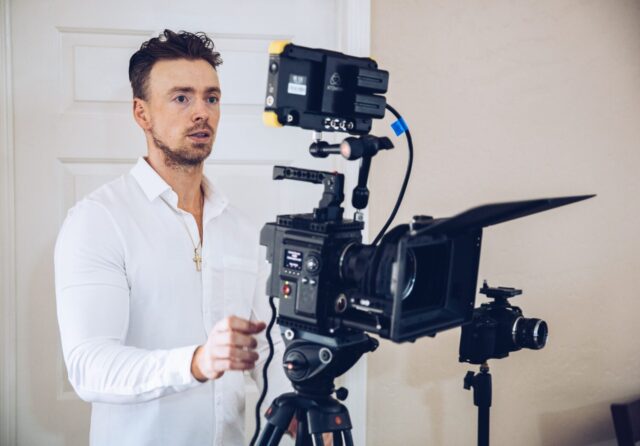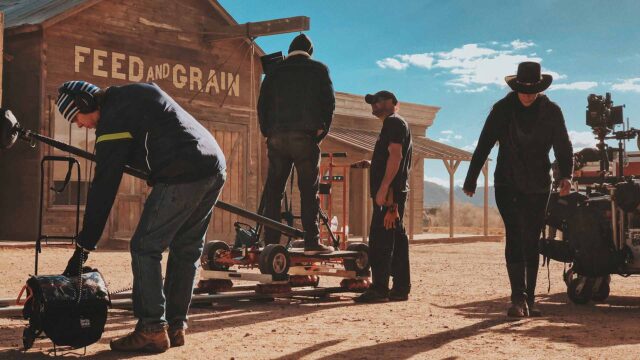
Are you a creative, ambitious, aspiring filmmaker looking to make it in the movie industry? You need the right tools and knowledge to go behind the scenes and find success. Read on for tips and tricks on how to become a successful director.
Understanding the Role of a Movie Director
When you set out to make a movie, it can be easy to overlook the importance of the director’s role. The director is the creative force behind the film, and his or her influence is profound. It’s important to understand exactly what a movie director does in order to be successful as an aspiring filmmaker.
On a general level, the primary responsibility of a movie director such as Eamon O’Rourke is to oversee all aspects of production and ensure that creative, technical, and logistical elements come together on time and successfully.

The entire production process will fall on the shoulder of your director. He or she will serve as an ambassador for your story, leading all personnel on set throughout pre-production, production, and post-production.
A movie director’s primary responsibilities include:
- Developing an artistic vision for the film
- Creating shot lists for crew members during production
- Having strong communication skills in order to work with actors, camera operators, and sound engineers alike
- Working with editors during the post-production process to ensure the desired final product
- Managing budgeting concerns from the beginning through the end
Developing a Filmmaking Vision
When developing a directing vision, it’s important to understand both the elements of cinema (e.g., composition, movement, and editing) as well as narrative storytelling.
It is essential to study various cinematic movements from both modern and classic films. At the same time studying different genres (comedy, horror, sci-fi), casting decisions, scripts, budgets, and marketing plans will also inform your directorial perspective.

Developing a vision also requires practice in pre-production planning activities such as shot list creation, lighting diagram designs, and storyboarding just to name a few.
Additionally, you’ll want to be aware of logistics such as production calendars or deals with equipment vendors in order to stay on track throughout the process.
Build relationships with key players including actors throughout all phases of production to ensure that the process runs smoothly from start to finish.
Strong talent chemistry can make up the difference between success or failure in film projects so understanding each artist’s creative process can increase the chance of project success exponentially.
Pre-Production Tips and Strategies

To ensure success for your project during this crucial time, it is important to have a thorough understanding of each step and clearly organized plans in place to carry them out efficiently.
Planning
Before you begin filming your project, it’s important to create a detailed plan that breaks down each step involved in pre-production. This plan should include short and long-term goals that are specific objectives you want to meet by a certain date throughout the pre-production process.
Budgeting
Estimating costs for your project before filming begins will help you avoid any costly surprises later on. Following industry standards or referencing other similar projects can help make sure you come up with a realistic budget for your movie shoot.
Writing

You’ll need an engaging script in order to attract higher-caliber actors and an experienced crew–especially if you’re seeking funding from investors or production partners.
Reviewing feedback from existing projects can be beneficial as well–such as reading reviews or speaking with people associated with past performances related solely to writing–to get an idea of what works best when producing scripts and stories that resonate with audiences.
Casting
Selecting your cast is one of the more challenging aspects of pre-production because it requires knowledge and experience working with actors to help determine both typecasting accuracies but also the chemistry between actors likely unacquainted prior to production start-up work.
Properly researching talent through auditions can be extremely beneficial for helping select cast members who have demonstrated their ability during rehearsals despite potentially perfect match of brief descriptions on paper alone.
Location Scouting

Choosing specific locations where scenes will be shot is another important step in pre-production. It’s essential that the setting turns out visually appealing on camera which can require touring many locations beforehand in order to gauge what effects are necessary based on scenery alone before adding contrived decorative items into shots.
This can save time fixing settings afterward and accelerate edit times once post-production.
Working with a Cast and Crew
When working with actors and their performances, it’s important to provide direction that is clear but also provides room for creativity. As far as communicating with your crew members goes, it’s critical that you provide clear instructions for everyone before each shoot or scene so that everyone understands what needs to get done in a timely manner.
Make sure each member of your team has access to the script; allowing individuals time prior to shooting allows them ample opportunity to become familiarized with the material they are working on so they can be ready when it’s time for action.

Good communication between yourself and each individual involved is key so that all elements can work together smoothly in order to keep production running effectively and efficiently when it comes time for filming scenes or shots. In addition, being open-minded towards ideas from others on set – like a camera or sound professional – can contribute to innovative results during the post-production stages.
Post-Production Techniques
When the shooting of the movie is over, post-production techniques come into play. Post-production is the technical process of completing and preparing a film for distribution by adding visual and sound effects, illustrations and animations, music, and more.
Editing
Properly cutting your footage together can make or break a film’s success; therefore, it’s important for aspiring filmmakers to understand how to edit properly by familiarizing themselves with different editing software.
Learning about basic steps such as entering, blocking scenes and building momentum can help streamline this process.
Color Grading

Color grading is an editing method used to improve the overall visuals of a piece of media by artificially enhancing contrast levels between colors.
Mastering color grading has become increasingly popular with modern filmmakers who are looking to implement more creative design elements in their work.
Sound Design/Mixing
Doing sound mixing correctly allows viewers an opportunity to enter into another world within these film experiences as they listen closely into every detail that takes place on screen; but if done wrong, it can harm a viewer’s connection with the film itself so it’s essential that aspiring filmmakers develop reliable sound mixing skills to ensure their movie sounds just as good (if not better) than its visuals.
Score Composition

Music composition helps set up scenes perfectly when strategically mapped out, an example being “hero theme songs or epic chase themes that match perfectly”. Music has also been noted for helping add complexity to selections of scenes.
Knowing what kind of musical approach works best with each frame can dramatically increase how successful your production may be. Many resources like MIDI instruments, Royalty free loops, or even samples help bring music into motion.
Conclusion
The opportunities that exist now within filmmaking have never been more abundant than they are now – so if you want to be a director it is possible!
With hard work, dedication to learning your craft, networking skills, patience, and perseverance you too can be part of one of the most rewarding professions there is – storytelling through the film!









